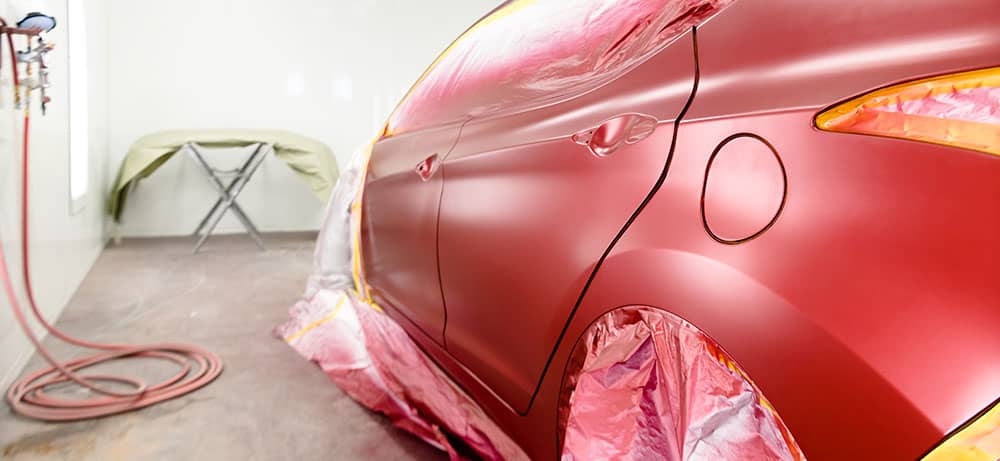
Achieving a quality paint finish is not only important when painting luxury vehicles or show-worthy custom cars. In most automotive body shops and collision centers, achieving quality paint finishes the first time can have a significant impact on productivity and profitability.
In order to achieve high-quality paint finishes, you must first understand contamination, and how dirt and dust can enter your paint environment. Contamination can come from many different places — from the clothes you wear to the products you use to the processes you follow. The following are the most common causes of contamination in the paint job:
All vehicles should be washed before entering the repair process. This keeps excess dirt and debris out of the shop and the paint booth. Pre-washing also helps estimators find secondary damage on adjacent panels that may have been covered by dirt and overlooked in the estimating process. Particular attention should be given to door jambs and wheel openings, as these are the dirtiest areas on a vehicle, and often the main contributors to contaminants entering the spray booth.
Technicians should clean vehicle panels before they begin repair work and immediately after sanding. If panels are not wiped down before sanding, contaminants can enter into the sandpaper and spread to all of the areas of the vehicle or panel that are sanded. If sanding dust is left on the panels, it can bind to the panels and will be harder to clean off later. Any sanding dust that is not cleaned off the panel will work its way into the paint job, causing contamination or even delamination in extreme cases.
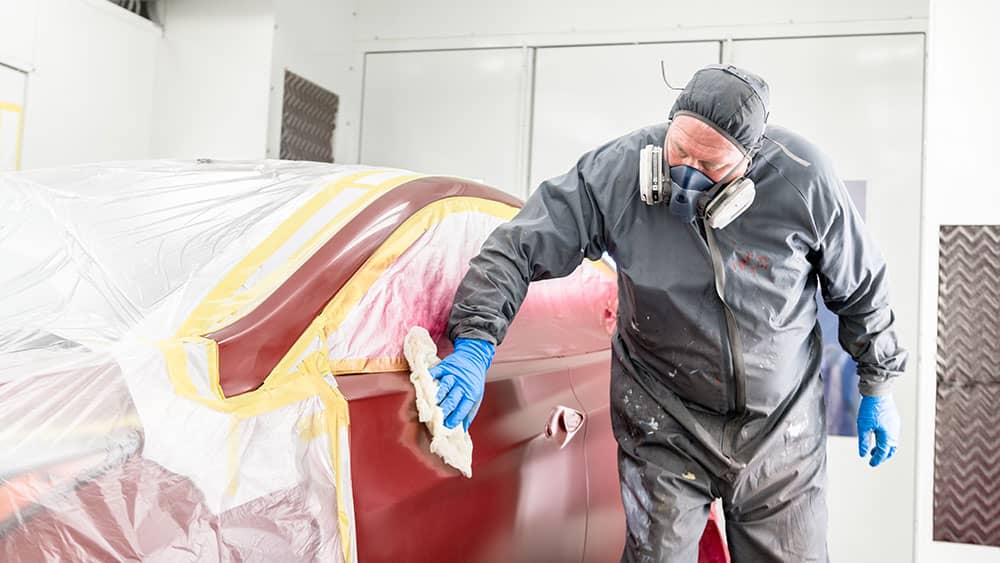
For chemically cleaning panels in preparation for paint, technicians should use quality lint-free wipes. Cheap cloths can come apart, leaving fibers behind on the panel. These fibers then end up in the basecoat, which cannot be fixed by buffing. This results in the panels needing to be repainted. Regardless of the quality of the wipe you use, it should never be reused. Use a new wipe for each panel. This prevents any potential contaminants from being spread to other panels and paint jobs.
Similar to wipes, cheap or poor quality tack rags can leave residue behind, which can lift or react with paint, especially waterborne paints. Tack rags are also designed for one use only. To minimize waste, tack rags that have been used once for wiping a panel can be used to tack off airlines or spray booth walls.
Spray guns need to be cleaned properly and thoroughly after each color or product. Dried paint or old paint left in the spray gun can break loose and find its way into your paint job. If you are lucky, it will be small and look like a dirt nib that can be fixed. However, if the dried paint is a metallic or pearl and ends up in a solid color you are spraying, you may have to repaint the panel.
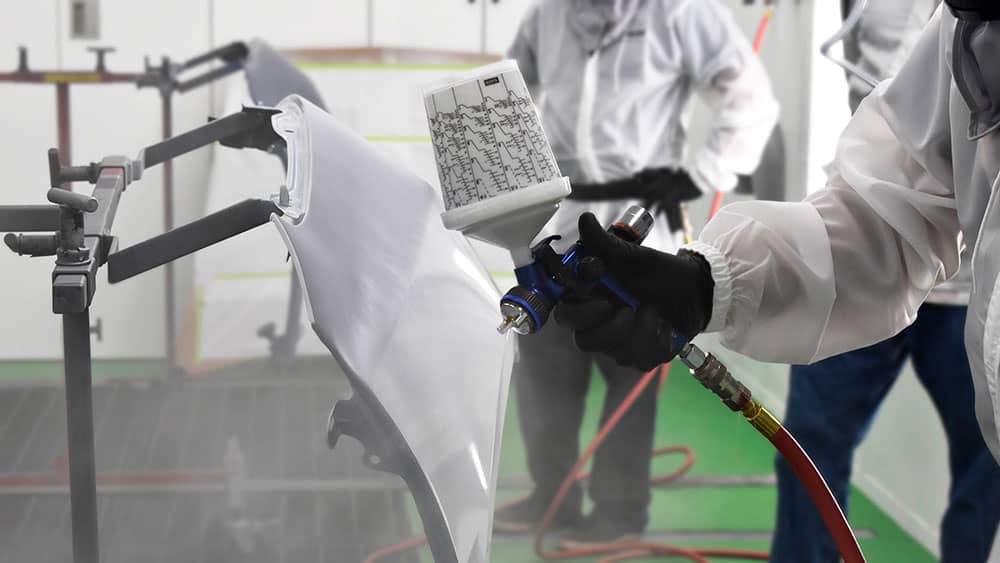
In addition to contamination concerns, poor spray gun maintenance can result in a bad spray pattern, which can cause mottling, striping or poor coverage. Check with your spray gun manufacturer for proper spray gun cleaning procedures. Most spray gun manufacturers have videos online showing the proper way to clean their specific paint guns.
If a spray booth is negatively pressured, it works like a large vacuum. Contaminants, especially dust and dirt, outside of the paint booth can be pulled through any crack or seal in the booth and end up in the paint job. To keep contaminants out, paint booths should be balanced to run at a slightly positive pressure compared to the surrounding environment.
To ensure proper air velocity in your paint booth, vehicles should be centered over the exhaust pit as much as possible. It is okay to slightly move them to the side, but too much will cause the air velocity to be significantly hindered and become very imbalanced. Proper velocity in a spray booth is between 80 and 120 feet per minute for most paints. Moving a vehicle to the side will cause some areas to drop well below the threshold, while other areas will have too high of air velocity. This can cause overspray to settle back onto the panels, making basecoat look dirty and clearcoat have a hazy or sandy appearance.
The paint booth should be running at full operating speed when parts and vehicles are being loaded. This pressurizes the spray booth so that when the doors are opened, any debris or dust is pushed away from the booth opening. If the paint booth is not running and the doors are opened, it creates a vacuum in the booth, which pulls dust, dirt and contaminants from the surrounding area directly into the paint booth.
Improper painter attire is one of the biggest factors leading to contamination in paint jobs. Most contaminants come from dirt falling off of the painter’s clothes or skin. To prevent contamination from entering the paint job, painters should wear full paint suits. Gloves also need to be worn to prevent skin oils from making their way onto the panels to be painted. The oils can lead to fisheyes or other paint-related issues.
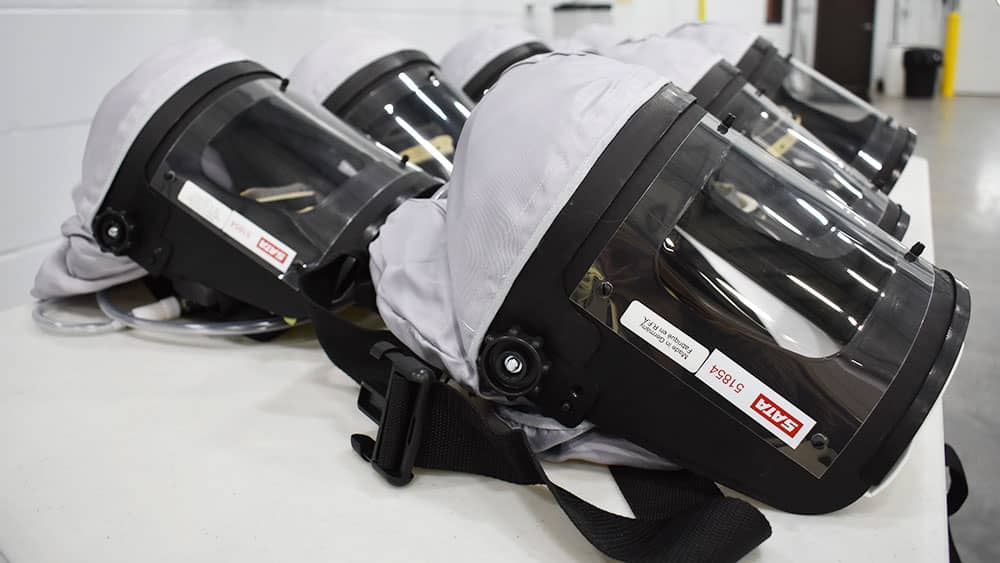
In addition to full paint suits and gloves, technicians should wear hoods. Many hair products, including shampoos and conditioners, can cause fisheyes in the paint. Also, hoods prevent painters from breathing in hazardous materials released from the painting process. All the PPE should only be worn in the paint booth and mix room. Never wear a paint suit anywhere else in the shop or it will also become contaminated.
Paint booth walls and floors should be swept daily with the booth running so all dust and dirt go into the filters instead of settling back onto booth surfaces. Booth walls should be covered with some type of booth protectant, including fabric or spray-on types, such as Booth Shield from Global Finishing Solutions (GFS). Floors can be covered with floor coverings, such as Pigmat, which hold onto dirt, keeping it from kicking up and ending up in your paint job. It can also be vacuumed daily to extend the life of the products and improve cleanliness.

By understanding how contamination can enter your prep and paint environment, you will be better equipped to tackle contamination head-on. Implementing small changes to prevent contamination can make a significant difference in the quality of your paint finish and your business’ bottom line.
One of the best ways to highlight your business is through a story that you can share across your online platforms. It humanizes your business and shows that your business can make a meaningful impact. Your testimonial would be used as a project profile on the GFS Booth Blog and can be shared on your website and/or social media channels.
Complete this form and we’ll be in touch to showcase your company.
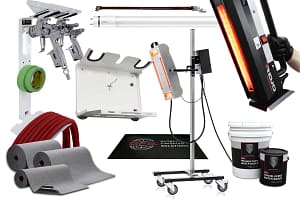
Shop a variety of GFS aftermarket products, including booth protection products and mobile accelerated curing units. And enjoy the convenience of fast and free ground shipping throughout the contiguous United States.
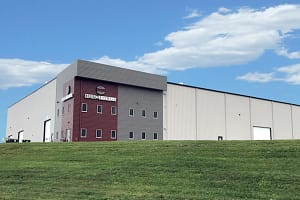
Located at GFS’ headquarters in Osseo, Wisconsin, the Center for Excellence is an innovative facility featuring an automotive refinish training center, as well as a separate space dedicated to technical product training.
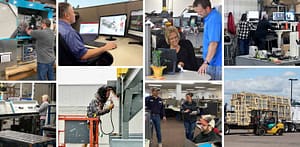
GFS is continuously searching for talented, ambitious individuals to join our team. We aim to provide our employees with every opportunity to make an impact on the company and find their niche along the way — weather in a production, field services or an office position.